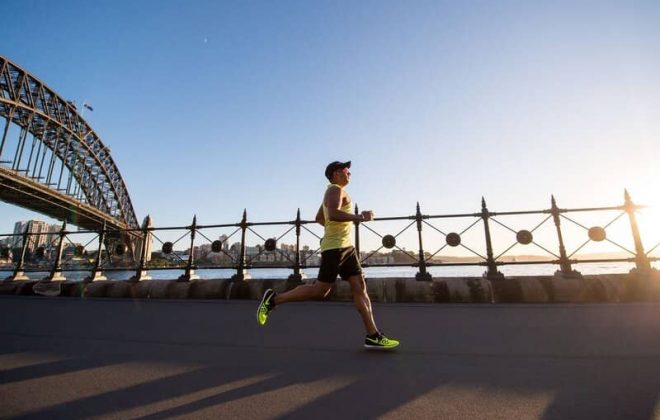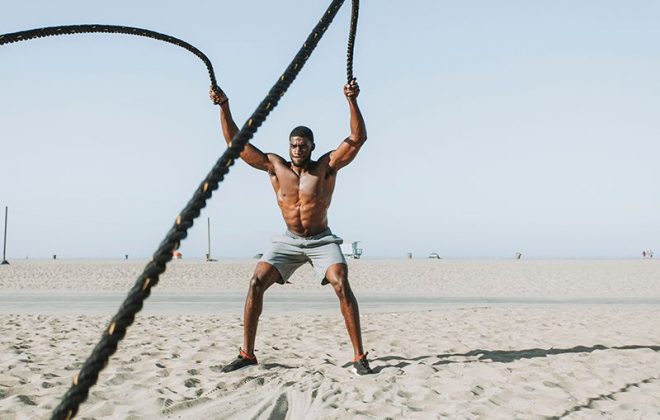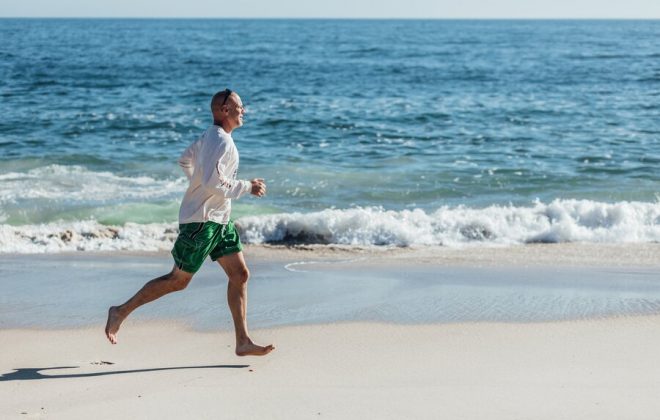Open Water Swimming Tips – How To Improve Your Performance In The Water
Swimming in any outdoor body of water, such as a lake, river or ocean is not the same as swimming in a pool. Open water swimming often involves unpredictable factors like current, weather or even water temperature and can be more challenging. In this post you’ll find four open water swimming tips to help you improve your skills and experience.
Open water swimming tips
While open water swimming has its risks, such as strong currents and unpredictable weather, it’s a great way to get outdoors, explore nature, and improve your physical and mental health.
First of all, open water swimming gives you the freedom to challenge yourself with different stroke techniques and distances. Swimming in open water offers a great workout, because it requires more effort and energy than swimming in a pool.
Second, it also provides an escape from the hustle & bustle of everyday life and allows you to enjoy the nature. Your mind instinctively gets deteached from negative thoughts, anxieties and mile-long to do lists.
Open water swimming is a mindfulness activity that can help you reduce stress and improve your focus.
Whether you train for a race or are looking to improve your physical and mental health, these open water swimming tips will help to improve your endurance, speed and overall experience in the water.
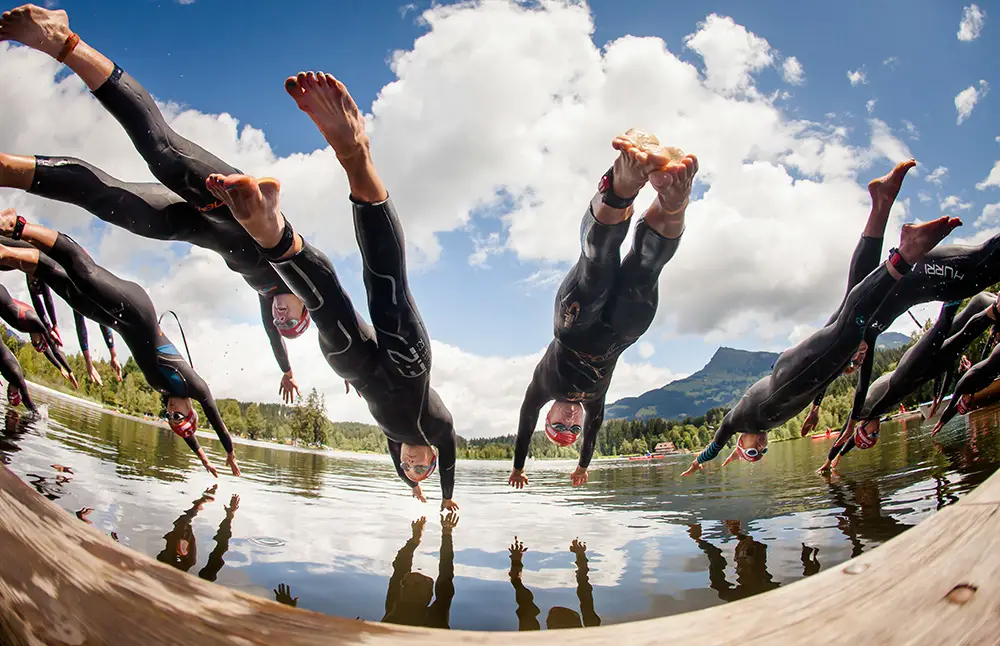
#1 Balance your nutrition
Nutrition is a key component in improving your open water swimming. Swimming is a vigorous exercise, especially if you are in the water for over an hour. And i’s a sport where you’re using your entire body to propel yourself forward. This constant movement strengthens your body, but also requires plenty of energy.
Which is why it’s vital to efficiently fuel your body before and after the exercise.
Eating a sufficient amount of carbohydrates provides your muscles with energy, thereby improving performance. These also provide fuel to our brains, giving us a clearer mind and allowing us to stay focused and motivated better. Carbohydrates can be found in such foods as breads, rice, oats (and other grains), fruits.
Swimmers should also look to consume adequate protein. Doing so will speed up recovery processes and will help to reduce muscle sureness. And it will help an athlete swim more often and for longer periods. Protein is found in such foods as beans, legumes, nuts and other.

The Resilient Athlete
A Self-Coaching Guide to Next Level Performance in Sports & Life
Are you aiming to become a resilient athlete who is able to withstand any pressure? Be able to jump on any opportunity? Take any challenge life throws at you head on?
Then this book is for you.
Learn moreThe easiest way to make changes to your diet and develop good habits is by creating a standardized shopping list and then meal prepping. Doing this will make it much more enjoyable to stick to healthy eating habits.
Eat smaller meals
Besides these nutrition tips, I’d like to add that it also helps to eat smaller meals frequently compared to having few big meals. Larger meals will make you feel overly full, sluggish and less motivated to stay active. Smaller balanced meals, on the other hand, will provide you with just the right amount of fuel to get in the water and smash your goals.
Read also: Top 10 Endurance Athlete Diet Mistakes And How To Avoid Them
#2 Practice sighting
One of the main differences between swimming in the open water and in the pool is the lack of guide lines (on your sides or underneath) to make sure you are swimming in a straight line. For open water swimmers it means zou can easily drift off course and become disorientated.
Which is why learning how to sight effectively in one of the most useful open water swimming tips.
Sighting means taking quick peak at your surroundings in between each swimming stroke. It’s not as easy at it sounds, becaus you only have a brief moment when your face is above the water.
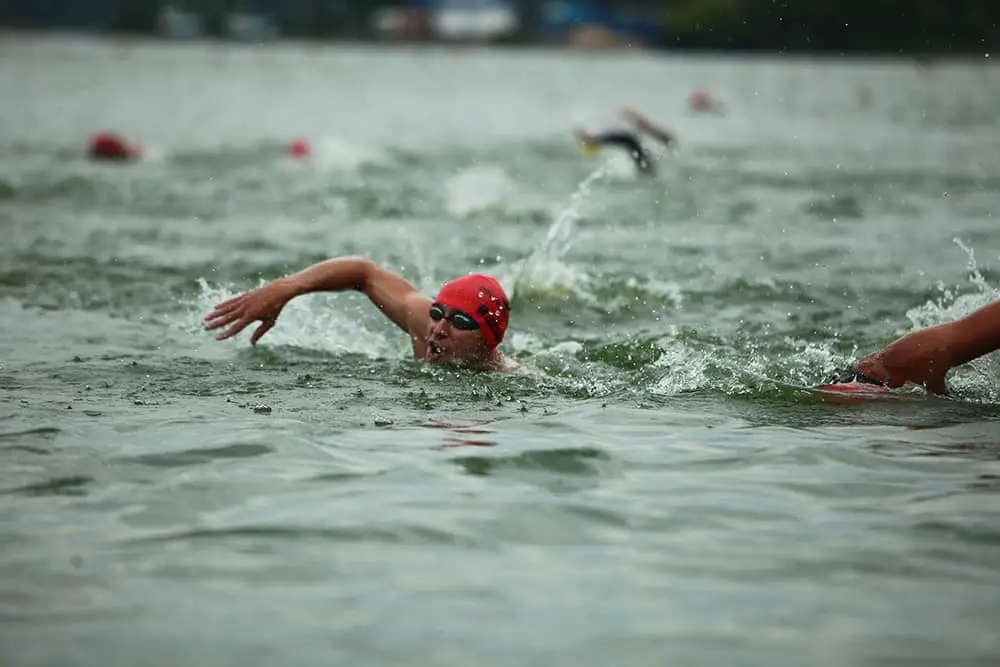
When sighting, a swimmer should lift their head and look for a pre-determined landmark to establish a straight line for their swim. To make sighting easier, you should aim to focus on specific things, preferably in front of you. A large tree, an old building or inflatable buoys – anything that is big enough and doesn’t move.
Learning how to sight will massively improve your open water swimming skills. It helps you stabilise yourself in the water and swim longer distances without the frustration of veering off course.
Once you have mastered the skill, you’ll find that you become more confident in the water and open to trying new techniques.
#3 Work on your strength
Open water swimming can be just as effective as a gym session. However, when you are searching for tips for open water swimming and ways to improve, a few strength sessions per week could really help you on your journey.
There are four specific exercises that will strengthen your muscles and core, which will allow you to swim faster, longer and with less fatigue.
- Deadlift. This exercise strengthens your hamstrings and back, so that they don’t get tired too quickly when swimming. Doing this exercise correctly can positively improve your posture in the water. An improved posture also means less lower back pain after swimming.
- Lat pulldowns. When doing this exercise, you use arm & back strength to pull down on a machine to lift weights. This directly mimics the pulling motion that is needed to swim and propel yourself through water. Lat pulldowns are also beneficial to shoulder muscles and it improves your flexibility, speed and strength in the water.
- Russian twists. This is one of my favourite exercises to improve open water swimming. It builds core strength, which makes the twists and turns of swimming strokes much more effective. It also means you can switch between swimming techniques without losing any speed.
- Mountain climbers. This is one of the best exercises for swimmers, as it ticks all the boxes. It works your core, legs, shoulders and arms. Mountain climbers require the constant movement of your legs, which will get your legs used to powerful kicks without getting tired.
Read also: 12 Effective Strength Building Workouts For Any Experience Level
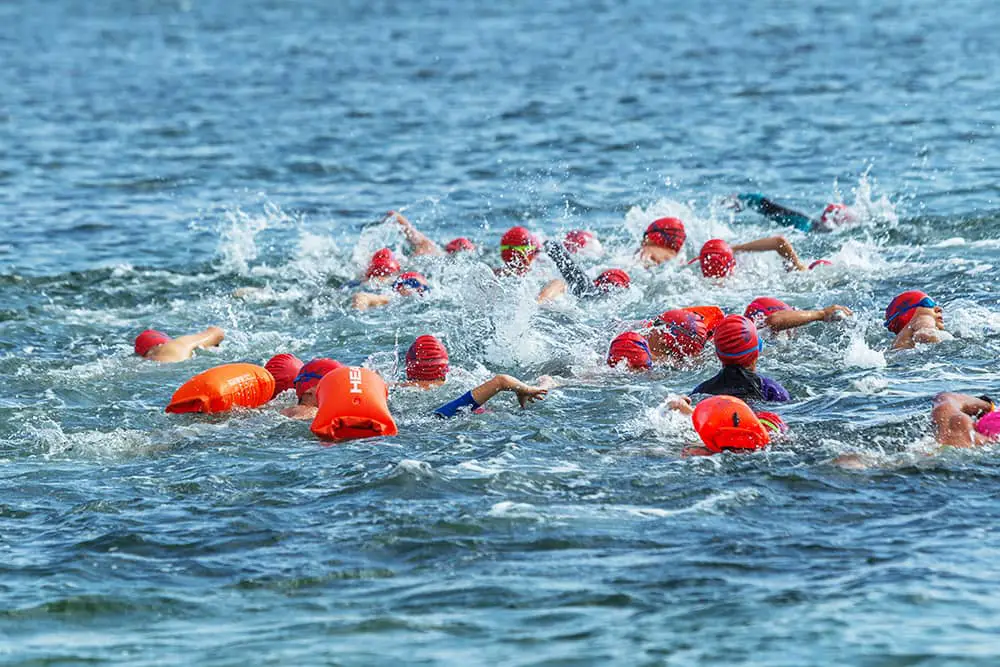
#4 Get appropriate gear
If you are looking to maximise your potential in the water and improve your techniques then invest in the right gear is one of the best open water swimming tips I can give you.
You don’t need the most expensive or most popular equipment. All the essentials can be found at affordable prices. It’s best to find what works for you, instead of shopping off other peoples recommendations of specific brands and items. When buying your gear, ensure you choose the brightest, boldest colours. This will allow others to spot you easily.
Here is a list of open water swimming gear that will help improve your performance and keep you safe in the water:
- Wetsuit (thermal/neoprene material if swimming in the winter)
- Swimming cap
- Dry bag (to store car keys and your phone)
- Tow float (adds buoyancy)
- Emergency whistle
- Swimming socks / shoes / gloves (only needed in the winter)
- Swimming goggles (clear / mirrored or prescription lenses)
Read also: Simple Open Water Swimming Equipment Checklist For First Timers
A wetsuit and a cap can make it easier for your body to adjust to the temperature of the water (especially when swimming in cold water). This in turn means you can spend less time trying to acclimatise and more on actual swimming. You will also feel more comfortable and protected.
An emergency whistle ensures you can call for help in case of emergency and a tow float can provide you with a brief resting place to catch your breath. So, instead of leaving the water straight away when you are tired, you now have the opportunity to recharge and catch your second wind.
Jade Farrar
Jade is a passionate writer, triathlon lover and open water swimming enthusiast. She enjoys writing about these subjects to share her wealth of knowledge and experience to help encourage others to participate in the sports.
Have an opinion? Share via links below and tag @theathleteblog
Tags In
GET A FREE TRAINING PLAN
Subscribe to my email list and get access to a free 4-week “back in shape” training plan
You’ll also get two full-body strength sessions and some other goodies!

How did I get here?
Hey there! My name is Andrejs and I am here to inspire, entertain and get you fit for any adventure.
I went from being an over trained pro athlete to an endurance coach sharing how to listen to your body and live life to the fullest.
Traveling, new sports & activities brought new meaning to my training and made it much more effective, fun and enjoyable. And I'm here to help you do the same.
